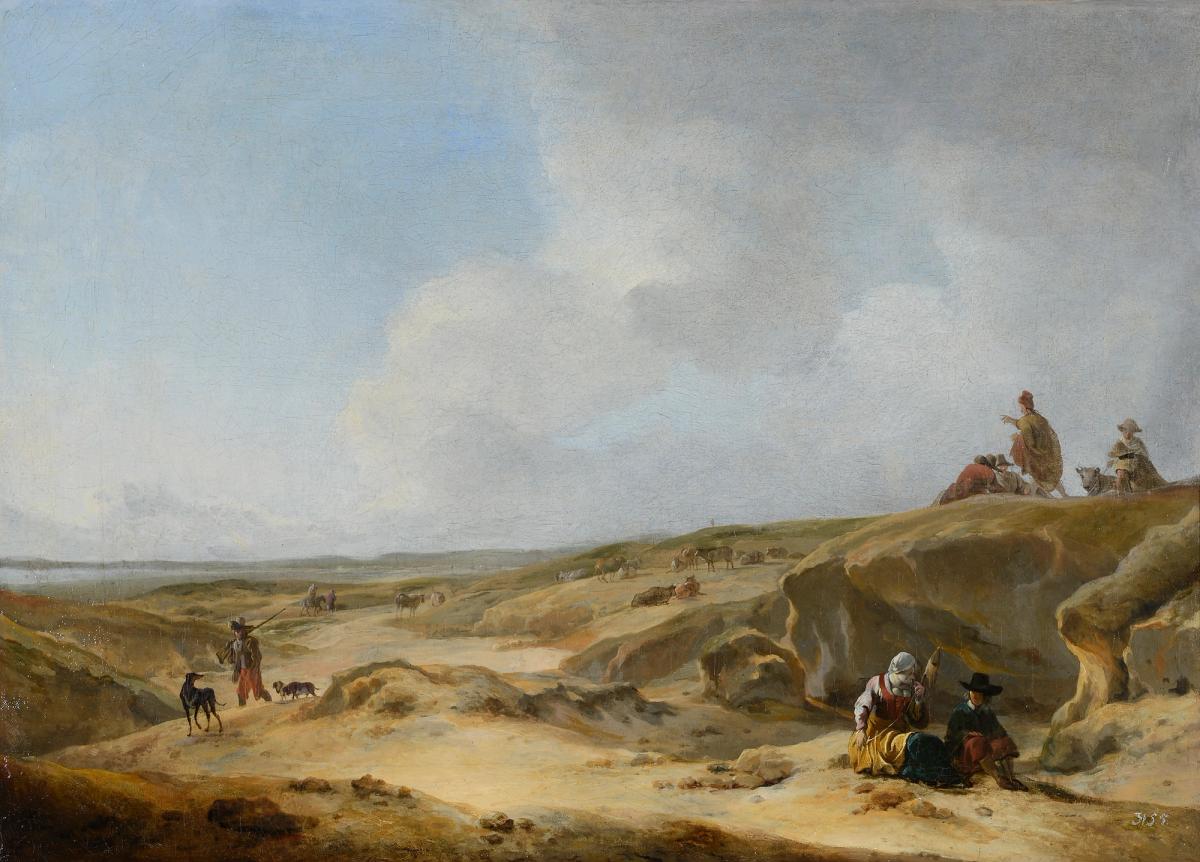A painting by Jan Baptist Weenix that was lost for almost 80 years is returning next week to Dresden’s Gemäldegalerie Alte Meister after a Dutch art dealer identified it as looted from the state collection and purchased it from the current holders to give it back.
Willem Jan Hoogsteder will hand over the 17th-century painting, Campagna Landscape, to the Dresden State Art Collections at a ceremony on 23 October. The painting of Italianate people in a Dutch dune landscape was purchased in 1742 for the collection of Augustus III, the king of Poland and elector of Saxony.
During the Second World War, it was put into storage in the Ore Mountains, then removed by the Soviet army to decorate the residence of a general. It entered the art market and was bought by Hoogsteder’s father at Christie’s in the US in 1984. At that point, the painting was attributed to Jan Wouwerman. It was later sold again in London and Amsterdam, and was registered in Jan Baptist Weenix’s catalogue raisonné in 2018.
“No one, including us, ever made the link to Dresden back in the 1980s,” says Hoogsteder, who is known in the Netherlands as the Old Master paintings expert on the TV programme Tussen Kunst & Kitsch, the Dutch equivalent of Antiques Roadshow.
The current holders purchased the landscape in 1995 without knowing its provenance, and approached Hoogsteder a few years ago and asked him to sell it again. Hoogsteder & Hoogsteder now employs two provenance researchers, who made the link to Dresden—which had no image of the missing painting. The inventory number on the back also did not match with the Dresden inventory number, so it took some time to identify the painting conclusively.
“It’s a difficult situation for the current owners, who bought it at auction perfectly legally,” Hoogsteder says. “But it’s difficult to sell because it was stolen by the Soviets in the war. I said to them – ‘I will buy it and give it to Dresden.’”
Dresden’s State Art Collections will present the landscape together with two other paintings that were lost during the war and recovered recently. These are a 17th-century portrait by Balthasar Denners and a Vincenzo Spisanellis painting of the flight to Egypt. Both works were acquired by the Saxon court in the 18th century.
The State Art Collections reached a settlement with the Danish private owner of the Spisanellis work. The Denners painting resurfaced on the German art market.


